Achieving good bass response is by far the most difficult part of setting up any home theater audio system and the solution is rarely as simple as buying a big or powerful subwoofer. Finding the right spot in the room to put that subwoofer can make a world of difference. Ironically, a bigger sub may limit placement options and make it harder to get good bass.
For the past couple of years, I’ve been using an SVS SB-2000 subwoofer. Although I’ve been very happy with it for the most part, I’ve sometimes felt that I was still lacking the type of kick-in-the-gut impact that I remembered having in my old apartment home theater, where I had a much smaller subwoofer. Of course, my current theater room is a larger space, but technically speaking, the specs on the SB-2000 ought to be sufficient for it.
Recently, our friends at SVS offered me the opportunity to test and review the newer SB-4000 subwoofer, and I wasn’t about to say no to that. At 18.3″ tall, 102.3 lbs, and with a 1,200 watt amplifier, the SB-4000 is both larger and more powerful than the SB-2000. However, I found that it may actually be overpowered for the space. I had to pull the amp gain way down to -16 dB after calibration, and I still felt that something was missing.
Due to the size of the SB-4000, I essentially only have two practical places to put it in my room, between my front mains either to the left or right of my center speaker. You’ll find a lot of advice online about subwoofer placement, most of which is based on having a simple rectangular room. If your room is at all a non-standard shape (as mine is, because it has an alcove on the right side in the front), and once you fill it with all your furnishings, a lot of that theory will prove useless in actual practice.
Some people assume that because bass is non-directional, it shouldn’t matter where you put the subwoofer. This is absolutely not true. The way the subwoofer interacts with your room acoustics will result in peaks and dips at various frequencies depending on where the bass originates from. A common recommendation is to put the subwoofer in a corner. Although this will typically result in the loudest bass, that bass may not be even across the whole frequency range.
When I installed the SB-2000, I tried to do a Subwoofer Crawl with a sound level meter in hand, but the results were inconclusive. Reasoning that the right side of my center speaker was closest to the center of my front wall, that’s where I left it. With the addition of the SB-4000, however, I decided to be more scientific about this process. I invested in a UMIK-1 calibration microphone and downloaded Room EQ Wizard software. This finally allowed me to take some proper measurements across the frequency range and see what’s really going on in my room.
The Measurements
REW has a steep learning curve and I feel like I need a Master’s degree in audio engineering to get past the Introduction section of the user manual, but I was eventually able to figure out the basics. I’m still a novice with REW and my early graphs were pretty rough. I got better at it later, but these should at least provide a sense of what I’m up against in the room.
First off, I started with the subwoofer in its original position, on the right of my center speaker, and did a comparison before and after running Audyssey calibration. As you can see, both have a serious dip right in the midrange between 50-70 Hz, which would very likely account for that lack of palpable impact I experienced. Audyssey narrowed the range of the dip but couldn’t eliminate it.
Next, I moved the subwoofer over to the left of the center speaker. Even without Audyssey, you can see that the 60 Hz dip is much shallower.
Although this appears to have introduced a peak after 70 Hz, peaks are easier for Audyssey to correct than dips. I re-ran Audyssey calibration, and here’s a comparison of the best Audyssey was able to do in the left and right subwoofer placements.
While this is still not exactly ruler flat, moving the subwoofer to the left side of the front wall is a clear improvement over having it on the right.
The Takeaway
I still have some work to do (more on that later; it did get better), but simply changing the position of the subwoofer in my room made a big impact on bass response. I couldn’t have determined this without the calibration microphone and Room EQ Wizard software. Reading all the conflicting theories about subwoofer placement is no substitute for proper measurement. The way bass interacts with your actual room will have countless variables that can’t be predicted, and unfortunately auto-calibration programs like Audyssey are limited in how much they can correct for this on their own. If you really want the best results, you’ll need to put in quite a bit of trial-and-error effort and take a lot of measurements.

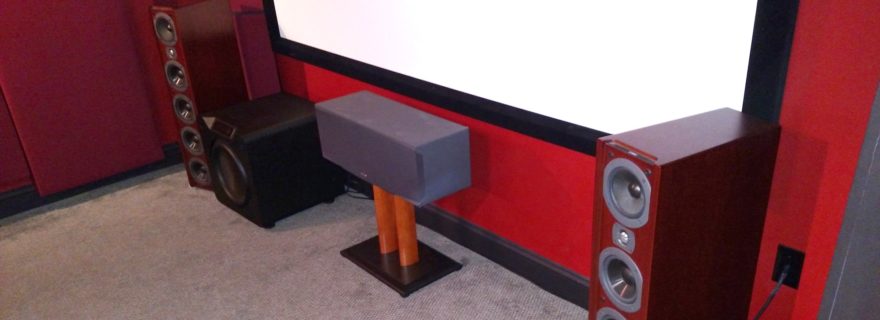
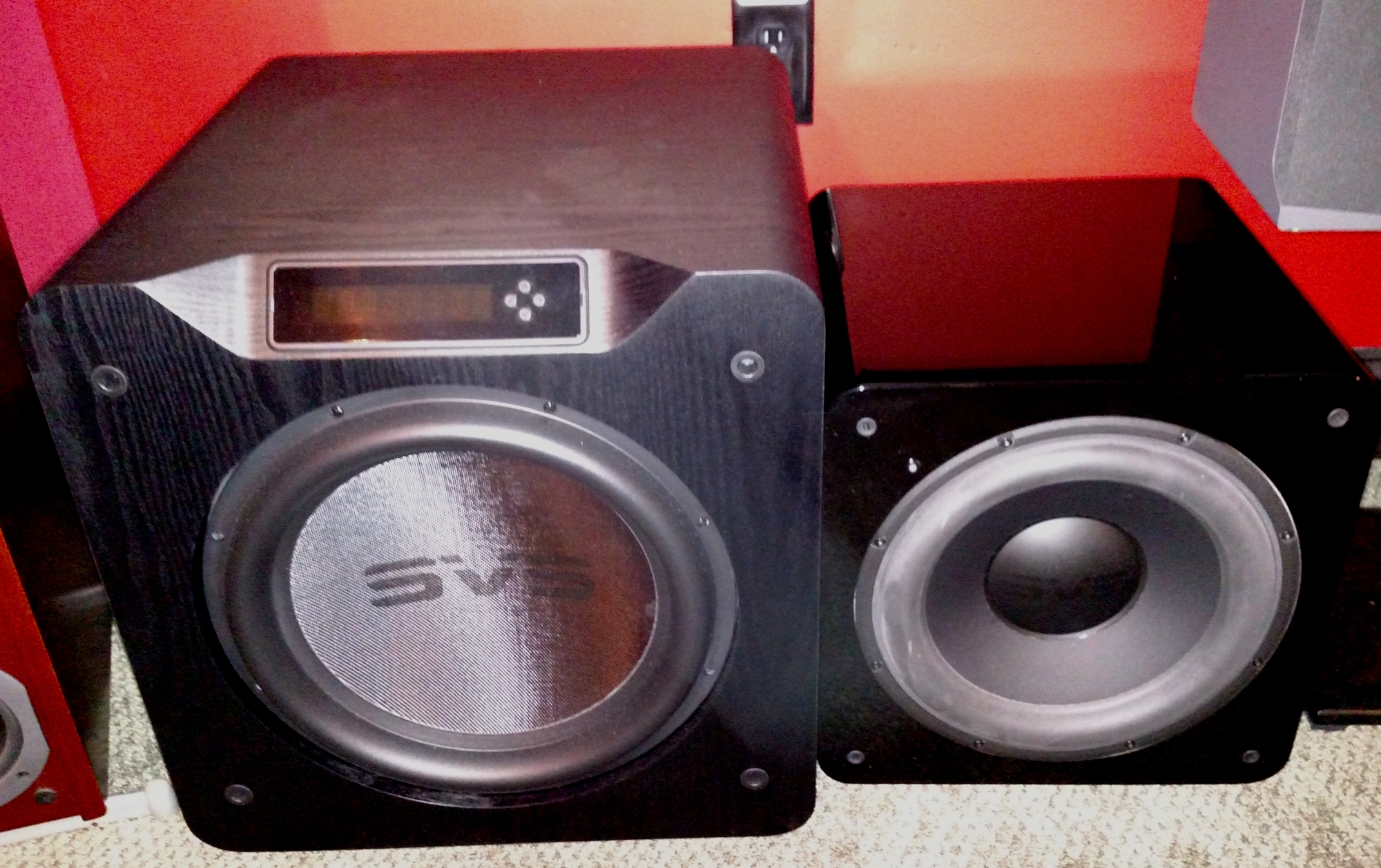
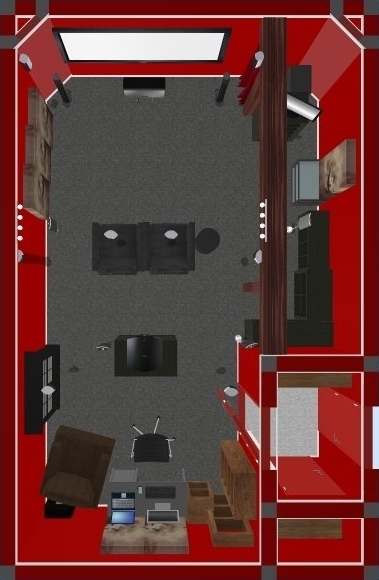
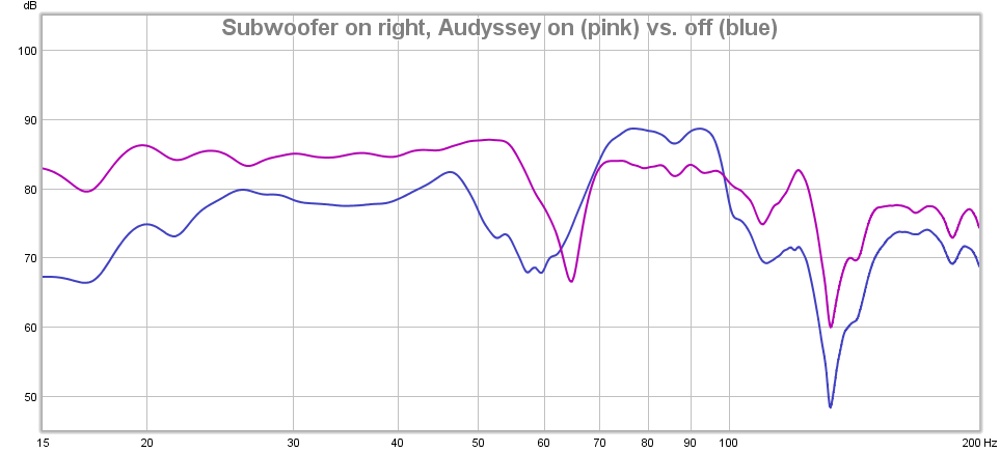
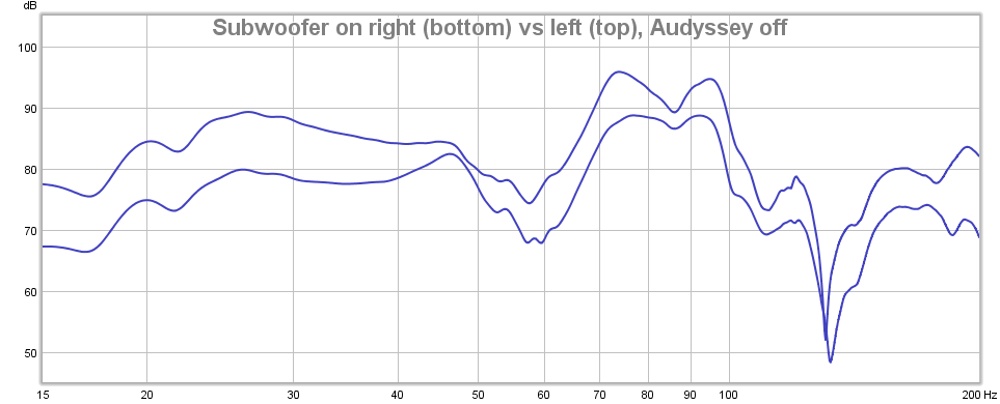


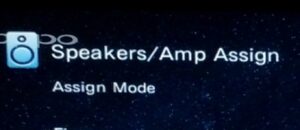
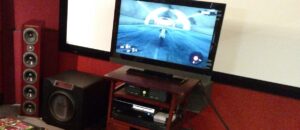
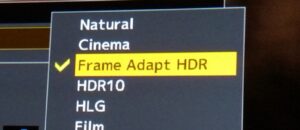
Muttley
That little “valley” between 65Hz and 100Hz explains a lot with respect to lack of impact. It’s about a 10dB difference…that’s half as loud!
Are you able to perhaps lower the crossover point on your full-range mains to “overlap” and cover some of that frequency range? Or might that be the issue? Is what you’re experiencing truly a null or some sort of cancellation due to the proximity of the sub to your other speakers?
Hopefully some of these things become more clear as you tinker with REQWiz, Audyssy, and sub placement.
Good luck!
Muttley
So…looking closer at your last graph, it might not be as difficult to smooth out that response.
Can you manually EQ post Audyssey calibration (I have A Pioneer receiver so I’m not familiar with Audyssey)? If so, you could cut the frequencies below 60/65Hz by about 10dB (if possible) and cross the sub over above 80Hz.
Subsequently boosting the amp gain (you mentioned that it’s actually at -16dB) could get you back to a level that’s more in-line with your desired output.
Again, this is all dependent on whether you can EQ post calibration.
Good luck!
Josh Zyber
AuthorI’ll have a Part 2 post tomorrow.
Michael Pompey
Thanks for posting the article. I ran into similar issues in my room. For years I’ve been running SVS PB10-NSDs that had gotten a little long in the tooth. I had an opportunity to get 2 open box SB4000s and have never looked back.
I was able to also utilize REW to analyze placement locations as well as adjust the crossover freq of the mains to even things out.
Might I suggest getting a minidsp eq unit between your receiver and your subs. You can then use REW along with MSO to create EQ filters to tame room resonances and load them to the unit. A lot of good tips also over at home theater shack dot come as well.
Welcome the eternal fight for good bass!